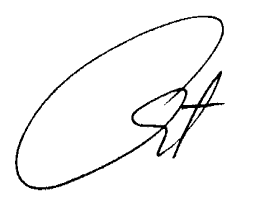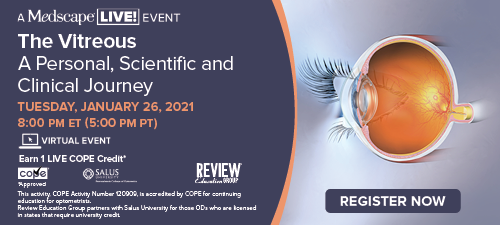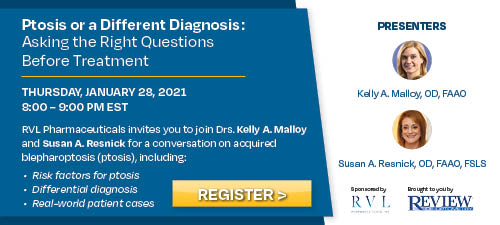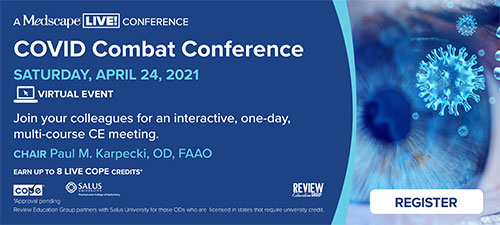
A
weekly e-journal by Art Epstein, OD, FAAO
Off the Cuff: The National Association of Optometrists and Opticians Deceit
Most of you have probably never heard of the National Association of Optometrists and Opticians (NAOO). To be honest, I didn’t either, at least not until the AOA recently announced that they had lodged a formal complaint against them with the IRS for misrepresenting who the organization represents. Essentially, the NAOO purports to represent doctors of optometry and opticians while actually representing the interests of optometry’s large corporate commercial employers.
|
|||||
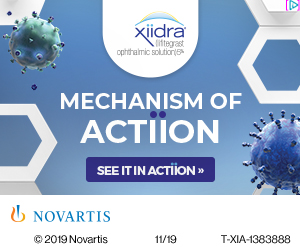 |
||
| Pediatric Keratoconus - Current Perspectives and Clinical Challenges | ||||
Keratoconus is an ectatic corneal disease characterized by progressive stromal thinning, irregular astigmatism and defective vision. It can be unilateral or bilateral with asymmetric presentation. It starts at puberty and either progresses rapidly to an advanced stage of the disease or stops in case of delayed onset and slow progression. Pediatric keratoconus is more aggressive than in adults and the management protocols differ because of various rationales such as accelerated progression, advanced stage of disease at the time of diagnosis and co-morbidities. It poses a burden to society as it affects the quality of life, and social and educational development in children. Hence, early diagnosis, recognition of progression and timely intervention with collagen crosslinking is imperative to arrest the worsening. Association with systemic syndromes and ocular comorbidities can be of concern in pediatric keratoconus. Severe ocular allergy when associated hastens progress and complicates timely intervention of crosslinking treatment and compliance to contact lens wear. Keratoplasty in pediatric keratoconus has good outcomes but can encounter frequent suture-related concerns. This article discussed the epidemiology, etiopathogenesis, clinical challenges and current perspectives of management of pediatric keratoconus. |
||||
SOURCE: Anitha V, Vanathi M, Raghavan A, et al. Pediatric keratoconus - Current perspectives and clinical challenges. Indian J Ophthalmol. 2021 Feb;69(2):214-25. |
||||
 |
||
| The Impact of Late-treated Pediatric Cataract on Intraocular Pressure | ||||
A retrospective analysis was conducted of all consecutive pediatric patients diagnosed and operated on for bilateral congenital cataracts during a seven-year period (2012 to 2018) in rural southern Ethiopia. Intraocular pressure and visual acuity before and after pediatric congenital cataract surgery performed at a relatively older age was assessed. Non-ambulatory vision was defined as hand motion or worse. The main outcome measures were intraocular pressure (IOP) and visual acuity.
|
||||
| SOURCE: Ben-Zion I, Prat D. The impact of late-treated pediatric cataract on intraocular pressure. Int Ophthalmol. 2021; Jan 20. [Epub ahead of print]. | ||||
| Impact of Binocular Visual Field Loss on Driving Performance in Glaucoma Patients | ||||
These researchers evaluated the driving performance in young and middle-aged Chinese glaucoma patients with mild to severe visual field loss compared to those without glaucoma by using a driving simulation test. Twenty-nine participants were included in this study: nine patients with glaucoma that passed the binocular Esterman visual field test, 10 patients with glaucoma that failed the binocular Esterman visual field test, and 10 age-matched healthy controls. A driving simulation test was designed as a frequency-based analysis of a lane-keeping task. The total performance error, the control-response amplitude and delay were calculated. The failing Esterman visual field test group showed the longest delay of control-response among the three groups. And a lane-keeping task delay was significantly associated with the inferior field of better-eye (r=0.51) and integrated visual field (r=0.55). |
||||
| SOURCE: Jiang ZY, Chen J, Yao J, et al. Impact of binocular visual field loss on driving performance in glaucoma patients. Int J Ophthalmol 2021; Jan 18;14(1):112-19. | ||||
| News & Notes | |||||||||||||||
| Alcon Launches Precision1 for Astigmatism Contact Lenses Alcon announced the U.S. launch of Precision1 for Astigmatism, a daily disposable, silicone hydrogel contact lens designed for astigmatic patients. The lens, utilizing the Water Gradient Technology of Dailies Total1, features the Precision Balance 8|4 lens design for a stable lens-wearing experience. The lenses feature Smartsurface Technology, a permanent micro-thin layer of moisture that steps up from 51 percent water at the core to greater than 80 percent water at the outer surface. The lenses are designed to support a stable tear film to deliver lasting performance. Read more. |
|||||||||||||||
| SynergEyes iD Hybrid Contact Lenses Launch SynergEyes introduced its next generation of hybrid contact lenses, SynergEyes iD, for patients with astigmatism, presbyopia, hyperopia and myopia. The hybrid lenses are designed to patients’ unique ocular anatomy utilizing keratometric readings, HVID and refraction to personalize precise lens parameters. A patient’s corneal diameter and curvature drive the specific lens design, with new linear skirts following the linear shape of the sclera. The multifocal lens is powered by a proprietary extended depth of focus design from the Brien Holden Vision Institute, and multifocal optics help provide a clear visual experience that smoothly transitions through all distances. Learn more. |
|||||||||||||||
| RightEye Launches Version 4.0 for Eye Tracking Technology RightEye launched its version 4.0 update to the RightEye Vision System offering a dynamic vision assessment module, expanded reference population dataset, and a modern dashboard and user interface. The new module combines the existing Functional Vision and Brain Health Modules into a single assessment to help providers more easily identify eye movement impairments. Simple visualizations and scores along with the ability to track, compare and show progress over time make it easier to interpret test outcomes and communicate results to patients. Learn more. |
|||||||||||||||
| Keeler and Merakris Partner Keeler announced a partnership with Merakris Therapeutics, a developer of regenerative healthcare products. Merakris is pioneering commercially biotherapeutic technologies derived from stem cells that promote homeostasis in damaged tissue. The Opticyte Amniotic Ocular Matrix technology is based on a manufacturing process intended to retain extracellular matrix properties and structures, making it ideal for ocular applications. Processed without harsh chemical reagents that may cause irritation when placed in the corneal bed and dehydrated for storage, it provides an ophthalmic barrier to the corneal surface and supports cell attachment and ingrowth. The Opticyte Amniotic Ocular Matrix comes in 8mm, 10mm, 12mm and 14mm circular grafts along with 1x1cm and 1x2cm surgical repair grafts. |
|||||||||||||||
| HG Vision Makes Equity Investment in The Power Practice HG Vision, a vision care consultancy dedicated to the growth and success of independent optometry, announced an equity investment in The Power Practice, a leading industry consulting company led by Gary Gerber, OD. Details of the transaction were not disclosed. HG Vision is led by industry veterans April Jasper, OD; Katie Spear, OD; Joe Colucci and David Jasper. Dr. Jasper is a highly respected, well-known practice development expert and thought leader with a practice in Florida. With the announcement, she joined The Power Practice team as co-chief dream officer with Dr. Gerber and co-host with him of the Power Hour. |
|||||||||||||||
| Surface Ophthalmics Advances Clinical Programs Surface Ophthalmics is advancing three unique clinical programs in 2021. SURF-201 (betamethasone 0.2% in Klarity) is being studied for the treatment of pain and inflammation following ocular surgery. Results from the Phase II trial for SURF-201 are expected in the early part of 2021. The two remaining clinical programs, SURF-100 (mycophenolate sodium 0.3% + betamethasone 0.01% in Klarity) for the treatment of chronic dry eye disease and SURF-200 (betamethasone 0.02% in Klarity) for the treatment of episodic dry eye disease, will be entering Phase II trials in 2021 with anticipated first doses administered in the first quarter. Read more. |
|||||||||||||||
| IDOC Welcomes Three New Executive Board Members IDOC alliance welcomed Janelle Davison, OD, Katie Greiner, OD, and Dr. Ansel Johnson, OD, to the eight-member board effective January 15. A native of Detroit, Dr. Davison is the founder and CEO of Brilliant Eyes Vision Center in Smyrna, Ga., and has been featured on the cover of Women in Optometry Magazine. Dr. Greiner is an optometrist and chief executive officer at Northeast Ohio Eye Surgeons, committed to providing whole-family eyecare with a special interest in specialty contact lenses. Dr. Johnson is the clinical director for Vision Salon Eyecare Associates in Blue Island, Ill. |
|||||||||||||||
| US Ophthalmic Introduces Eyer Portable Retinal Camera US Ophthalmic has introduced the Eyer Portable Retinal Camera, which connects to a smartphone for images of the retina to detect fundus disease at a lower cost than conventional methods. The device, which can be used for remote diagnosis by an eye care provider via telemedicine, illuminates and images the retina. It connects to a smartphone's camera, and an app sends the images over the internet to Eyer Cloud, which stores and manages patient files. The device further offers: panoramic images of more 110 degrees, iCloud connectivity, telemedicine capability, anterior and posterior segment imaging, and 12 megapixel capabilities. |
|||||||||||||||
|
|||||||||||||||
|
|||||||||||||||
|
Optometric Physician™ (OP) newsletter is owned and published by Dr. Arthur Epstein. It is distributed by the Review Group, a Division of Jobson Medical Information LLC (JMI), 19 Campus Boulevard, Newtown Square, PA 19073. HOW TO ADVERTISE |

